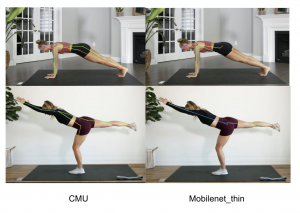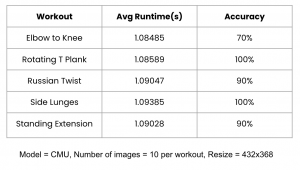This week I started building our ‘legs’ video library. I broke down clips from a few different YouTube videos into single repetitions of the exercises. Originally we had planned to use the video URLs to fetch the exercise clips, but now we think it may be easier to save mp4 versions of the clips, so I am planning to convert some videos to mp4 for trial Sunday and Monday.
I also started initial setup of the Jetson TX2 that we picked up. I am planning to download OpenPose onto the board over the next few days, per our schedule. I also spent time working on the design review slides.
I am pretty much on schedule, though I had to add a few extra days in the schedule for board setup and library construction, since it is taking a little longer than I anticipated.
For next week, I want to install and begin testing OpenPose on the TX2. Additionally, I am planning on working with my team to construct a small video library. I would also like to get some of the UI created.



